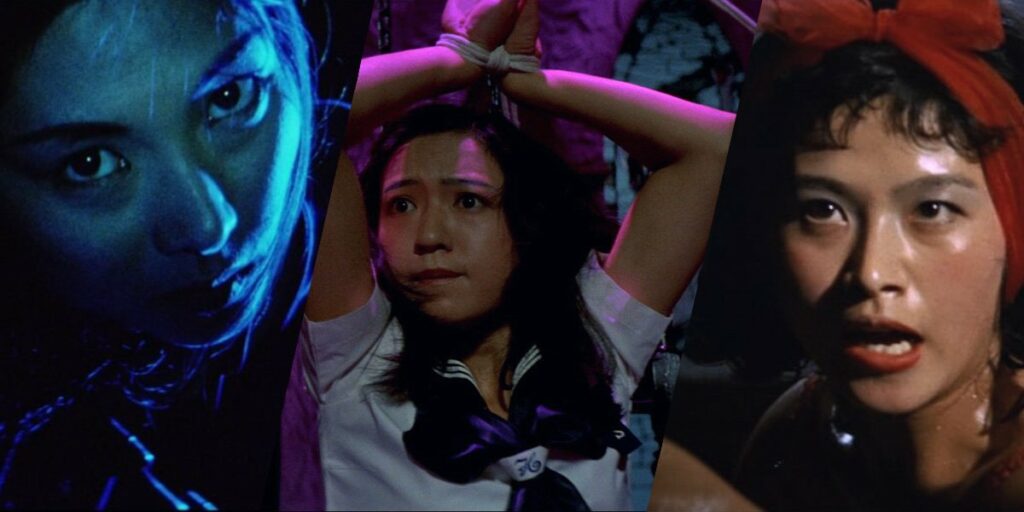In this list of the top 10 pinku-eigas, we will delve into the lurid depths of some of the most tantalizingly provocative films Japanese cinema has to offer.
What do you think of when someone mentions Japanese cinema? Likely the works of Akira Kurosawa enter your mind, or the incredibly popular films of Studio Ghibli. While these names are certainly notable, I’d like to take the time to explore an under-represented side of Japanese cinema: the pinku-eiga (also known as “pinkus” or “pink films”). First appearing in the mid to late 1960s, pinku-eigas are a genre of Japanese cinema that’s akin to sexploitation, focusing on eroticism, lust, violence, and sexual taboos. It is among the most extreme sub-genres of exploitation cinema out there, especially considering that some of Japan’s biggest film studios, notably Nikkatsu and Toei, produced the most popular and acclaimed pink films of all time.
What sets pinkus apart from other sexploitation films from Europe or America, such as the works of Russ Meyer, Radley Metzger, or Jesús Franco, are their focus on S/M elements, bloody violence and the mandatory censorship of sex organs. The best pinkus often borrow elements from the avant-garde, featuring colorful visuals, unconventional editing, and shocking narratives. While many were produced by Japan’s biggest studios in their heyday of the 70s, underground filmmakers also made their mark in the genre in the 60s and onward. In this article, we will take a look at the top 10 best pinku-eigas, spanning two decades from the 60s to the 80s, featuring some of the most notable directors to ever make a film in the notorious genre.
10. WOODS ARE WET
(1973)
Director: Tatsumi Kumashiro

The first film we’re looking at is Woods are Wet, directed by pinku auteur Tatsumi Kumashiro. He is one of the most acclaimed directors to ever work within the genre. His most distinct feature is that the nudity is often physically scratched out of the film, bringing attention to the censorship mandated by Japan’s advisory board. While not one of his most thematically complex works, Woods are Wet is easily one of Kumashiro’s most lurid films, packing in nonstop sexual depravity in just over sixty minutes. Taking inspiration from Marquis de Sade’s Justine, it delivers shocking imagery all wrapped in an alluringly cold aesthetic that lightly ponders themes of freedom and control.
9. MUSCLE
(1989)
Director: Hisayasu Sato
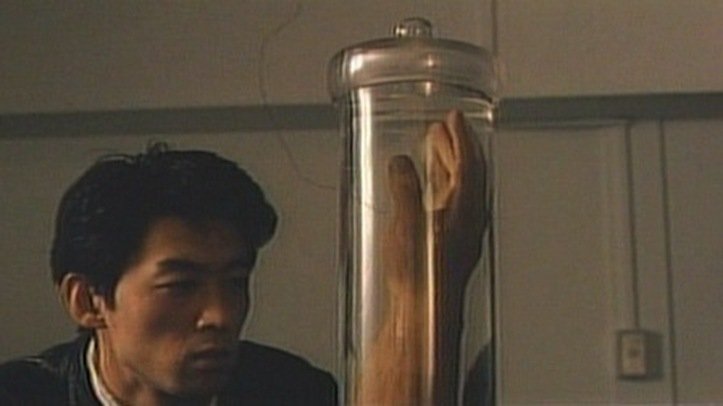
Muscle is unique in the world of pinku-eigas. Instead of relegating itself to the same heteronormative perspective that dominates the genre, it forges new ground by focusing on the relationship between two men. The plot is enticingly odd and abstract: after a horrifically violent incident during a sexual encounter between Ryuzaki and Kitami, Kitami disappears. Ryuzaki, still obsessed with Kitami, engages in a desperate search to find the only man with whom he ever had a mind-expanding sexual encounter with. Ryuzaki’s search leads him down a bizarre path filled with sadomasochistic flourishes. Sato’s film is made even more interesting with its many nods to infamous gay filmmaker Pier Paolo Pasolini, singling out his masterpiece Salò. Muscle also includes one of the most hauntingly beautiful endings of any pink film, which is soundtracked by the song “Ostia (The Death of Pasolini)” by underground electronic duo, Coil. All these elements meld into an intoxicating, surreal pinku film that is as emotive as it is erotic.
8. LADY SNOWBLOOD
(1973)
Director: Toshiya Fujita
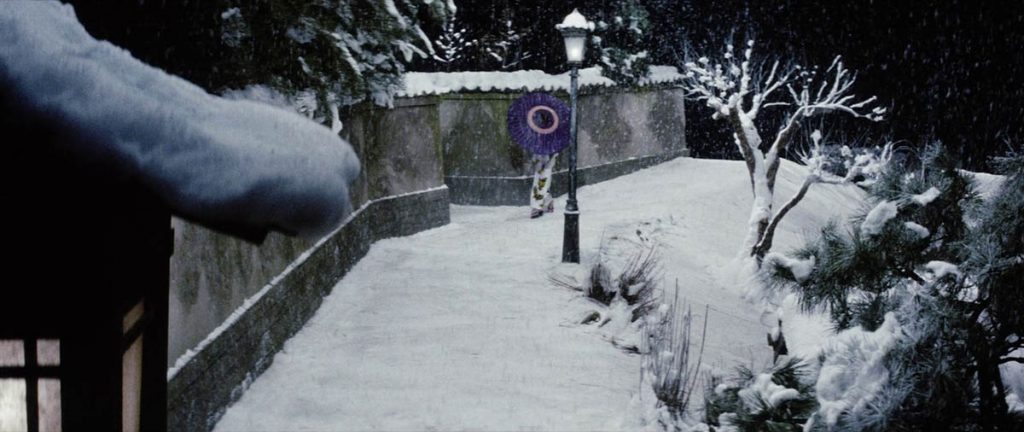
Lady Snowblood is a prime example of the pinky violence film, a subgenre of the pinku-eiga that Toei studios specialized in. While pinky violence films have their fair share of sex, they tend to focus a lot more on action than a typical pinku. Lady Snowblood fits this mold perfectly, using a graphic sexual assault as a jumping off point for an unconventional revenge film that has earned notoriety not just for being featured in the Criterion Collection, but also for serving as the main inspiration for Tarantino’s Kill Bill: Volume 1. Lead actress Meiko Kaji dominates the screen. She does all her acting with her eyes, which convey everything from heartache to cold-hearted revenge with just a glare in the right direction. Additionally, Fujita’s filmmaking is exceptional. He utilizes jagged editing to create feelings of suspense, and the entire film is overtly stylized, such as a scene where snow that’s falling turns red. Lady Snowblood is a classic revenge film and a must-see for any film fan.
7. BOHACHI BUSHIDO: CODE OF THE FORGOTTEN EIGHT
(1973)
Director: Teruo Ishii
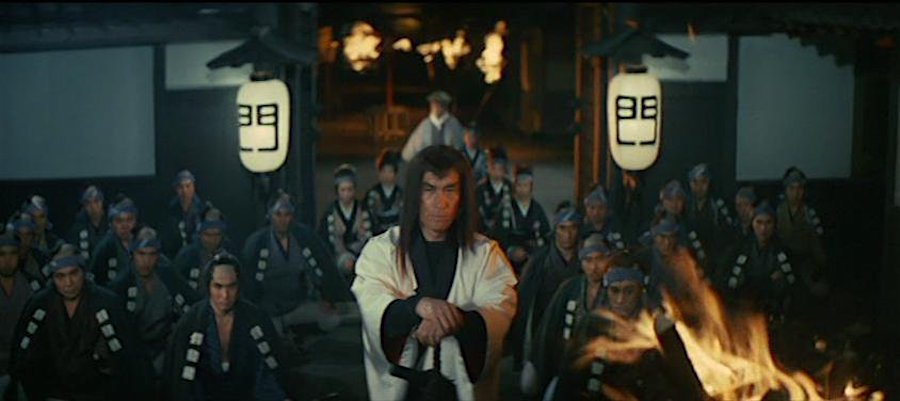
Teruo Ishii is another major name in the field of pink films, having carved out his space by making some of the most well-known ero guro-influenced pinkus. Ero guro denotes erotic grotesqueness. This can be seen in his films such as Orgies of Edo, which focus on various archaic modes of torturing women in the Edo period. However, Bohachi Bushido: Code of the Forgotten Eight is not as extreme as some of Ishii’s other films, and is relatively accessible by pinku standards. It does not belong to the grotesque but more so to the psychedelic. The narrative follows a suicidal ronin who becomes wrapped up in a cult of sadistic samurais. It is draped in a thick, dreamy aesthetic with bright colors, lots of slow-motion, and delirious violence. The film is uncompromisingly nihilistic but is so memorably extravagant that it remains entertaining throughout the swift eighty minute runtime.
6. FLOWER AND SNAKE
(1974)
Director: Masaru Konuma
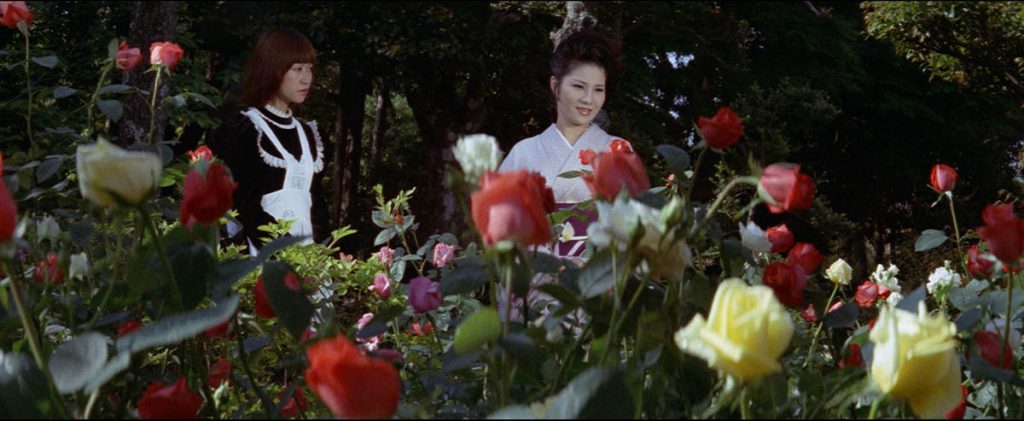
Here is where we start to descend into the lurid depths pinkus are known for. Konuma’s film Flower and Snake, the first in a series, is an exemplary roman porno (short “romance porno”). If Toei studios specialized in their pinky violence films, then Nikkatsu studios was the home of roman pornos, which focus more on sleazy sex than bloodletting. Not only is Flower and Snake bathed in sumptuous red lighting, not only does it have one of the most wildly groovy scores ever, it also relies heavily on S/M elements. The basic premise is that the boss of a company asks his inferior to torture his wife until she becomes an obedient woman. Yeah. Flower and Snake is a far cry from the proto-feminist Lady Snowblood, and commits fully to its repellent premise. And yet, it is delightfully distasteful, full of shocking, see-it-to-believe-it moments, which makes it a quintessential pinku.
5. FEMALE PRISONER SCORPION: JAILHOUSE 41
(1972)
Director: Shunya Ito
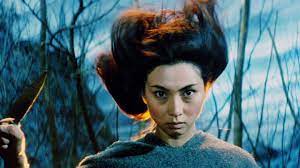
The second film in the highly acclaimed Female Prisoner Scorpion series, Jailhouse 41 finds our protagonist, Matsu (played by the iconic Meiko Kaji a year before her turn in Lady Snowblood) escaping imprisonment and on the run with her fellow inmates. What makes Jailhouse 41 stand out in the series is its commitment to gorgeous cinematic experimentation, playing with impossible lighting, nightmarish imagery, and hallucinatory editing. While the narrative is fairly straightforward, it provides constant momentum and keeps the story of women on the run exciting throughout. The film also takes grisly enjoyment in the frequent mutilation and violence towards the monstrous male characters. Jailhouse 41 remains one of the queasiest rape-revenge films ever made, and while not for the faint of heart, is a riveting watch.
4. STAR OF DAVID: BEAUTIFUL GIRL HUNTER
(1979)
Director: Norifumi Suzuki
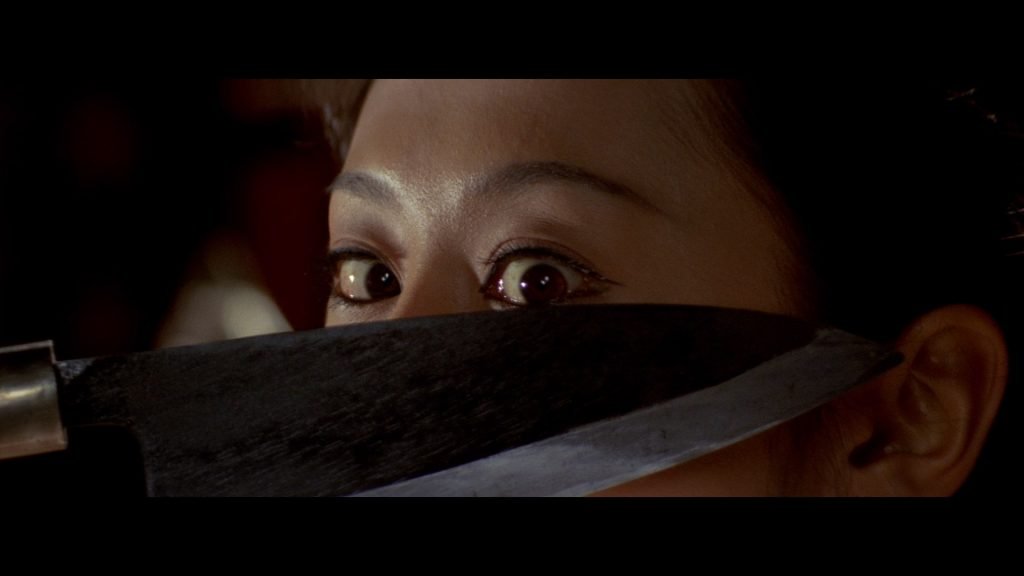
If Flower and Snake is the quintessential roman porno, then Star of David: Beautiful Girl Hunter is the roman porno on the verge of implosion. Made in 1979 before Nikkatu’s shift to churning out cheaply made, aesthetically unpleasing pinkus, director Norifumi Suzuki delivered what may be the last great pink film produced by Nikkatsu. Star of David: Beautiful Girl Hunter is an upsetting, shocking film, without even a proto-feminist lens (like Jailhouse 41) to help take the edge off. It is fully committed to being as repellent as possible, it’s distasteful depictions of sex and violence juxtaposed by the film’s stylish direction. A torture basement is lit in beautiful teals and purples, a scene of romance is presented as luxurious and wistful. However, these brief moments of beauty are undercut by sudden, harrowing violence, none of which I am going to spoil here. Additionally, Beautiful Girl Hunter tackles surprisingly meaningful ideas, ruminating on themes of postwar trauma, spirituality, and morality. It considers where evil comes from: is it ingrained in society? Is it learned? Are some people born with it?
3. GO, GO, SECOND TIME VIRGIN
(1969)
Director: Koji Wakamatsu
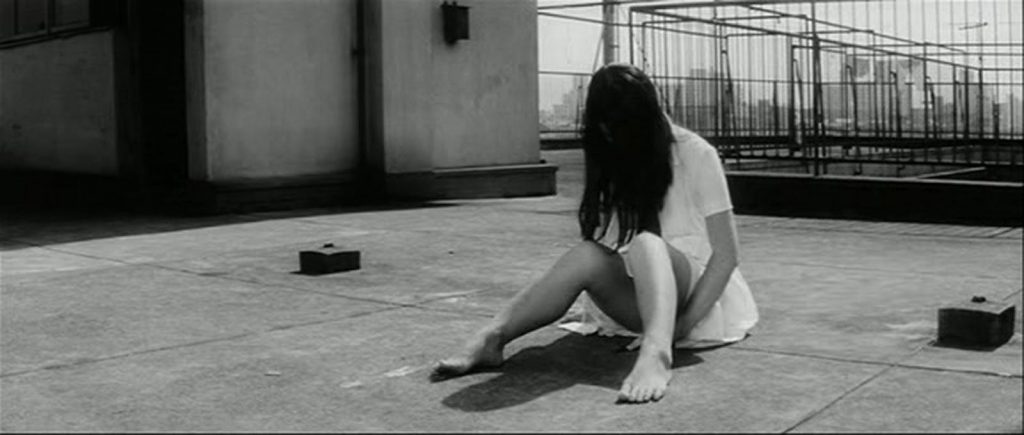
Koji Wakamatsu is arguably the biggest name in pinku-eiga history, having been one of the purveyors of the genre. He started his career working for Nikkatsu but swiftly turned independent to pursue the kind of aesthetically challenging, politically provocative, and sexually explicit films he wanted to make. His 1969 triumph, Go, Go Second Time Virgin is his best and most popular film. Taking place during a single night, two teenagers meet on a rooftop and discover they both share traumatic pasts. They connect with each other in a volatile, nihilistic relationship, and grapple with societal pressures they face due to their gender and sexuality. What sets Go, Go Second Time Virgin apart from other pinkus is its serious tone, brutal emotional impact, and its expertise in treading difficult thematic territory. This all makes the film one of the most effective melds between exploitation and arthouse in Japanese cinema history.
2. GATE OF FLESH
(1964)
Director: Seijun Suzuki
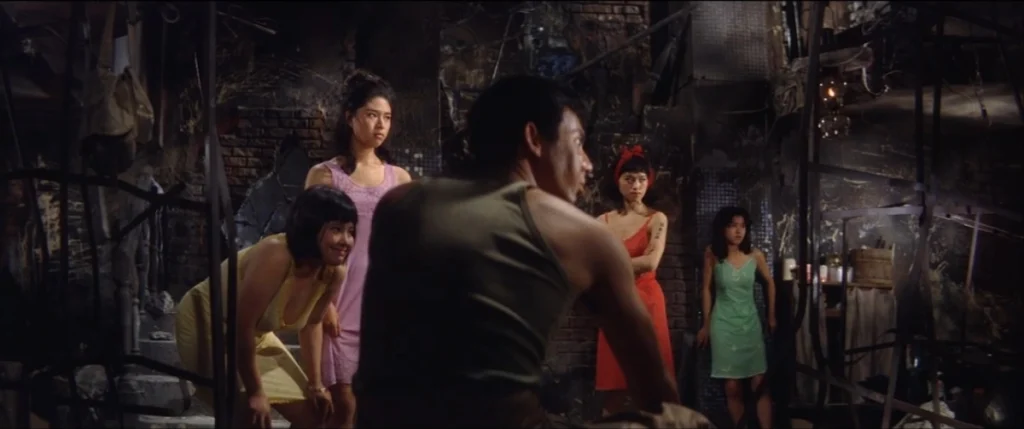
I’m cheating a little bit by including Gate of Flesh in this list. There is little nudity in the film, and what nudity there is is tastefully hidden by shadows. There is also only one true sex scene, and it is swooningly romantic. So, why is Gate of Flesh here? Not only is it Seijun Suzuki’s masterpiece, it also contains many of the trademarks that pinkus will become known for. There are impossibly stylized colors throughout the film, there is torture and violence, there is brief sex and nudity. And for being released in 1964, it feels ahead of its time in the unabashed portrayal of sex work. The film takes place in Tokyo in the late ‘40s, during the U.S. occupation of Japan. We follow a clique of sex workers desperately fight to survive in the bombed-out corners of Tokyo; hustling for money, fighting over territory, running from the police. Even at just under 90 minutes, Gate of Flesh successfully throws everything at the viewer from gripping emotional stakes to bawdy comedy to titillation and shock. As an early example of pinku sensibilities, it is a complete success.
1. IN THE REALM OF THE SENSES
(1976)
Director: Nagisa Oshima
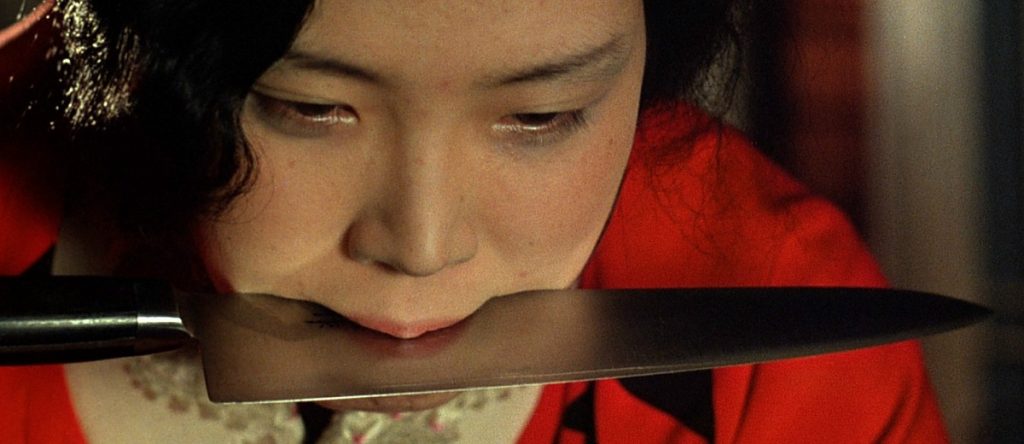
Finally, the number one pick. Probably the most well-known and controversial film on this list, Oshima’s In the Realm of the Senses is an emotional and aesthetic powerhouse that aims its fury at everything from media censorship to Japanese imperialism to patriarchal control of women. As a pinku, there is nothing else like it. Oshima elevates the genre’s conventions (sadomasochistic sex, graphic violence, sexual taboos) and masterfully intertwines them with a gripping, emotionally stirring, challenging film that focuses more on criticizing sexual conservatism (especially when it comes to the desires of women) than providing lurid thrills. To top it off, all of the sex in In the Realm of the Senses is real, which heightens the pinku elements even further. Because of its explicit nature, Oshima couldn’t even edit the film in Japan, transferring the film reels to France. While In the Realm of the Senses is undeniably graphic, it is also among the most beautiful films ever made, and certainly one of the most human. It more than deserves its place as the greatest pinku-eiga in the history of the genre.

